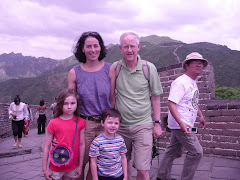If you want a glimpse into the future of computers and the Internet, you have to watch this video of Blaise Aguera y Arcas showing his Seadragon technology at the TED (Technology, Entertainment, Design) conference last year; TED is an annual, invitation-only gathering of people like Blaise.
Blaise is our genius friend in Seattle, and I don't use the word genius lightly. The demonstration of Seadragon and a connected technology, PhotoSynth, is simply astonishing.
I'm moved to post this video now because Blaise if featured in an article in this week's Newsweek.
Blaise, who is barely 30, invented Seadragon when he was at Princeton. Microsoft acquired his company nearly two years ago and Blaise is now one of its software "architects." He and his physicist wife Adrienne, and their children Anselm and Eliot lived around the corner from us in Seattle until Microsoft came calling.
For those who prefer a written explanation for what he's created:
Imagine every painting in the Metropolitan Museum of Art laid side by side on a vast white field. Imagine that you can float thousands of feet above that field and easily scan, with your own eyes, image to image and then dive into, say, a Van Gogh to examine individual brushstrokes without ever losing focus.
Or imagine very page in every book in the New York Public Library laid side by side - and you can find and read a single line in War and Peace, or scan thru the encyclopedia.
Or imagine every page of the Sunday NY Times - not in digital Web format but the actual page design - that you read by moving your cursor from one story to another without waiting for each page to download.
This is what Seadragon will one day do on your computer or cell phone or PDA. Maybe it could do the impossible and save the newspaper industry?
Tuesday, January 29, 2008
Subscribe to:
Post Comments (Atom)

No comments:
Post a Comment